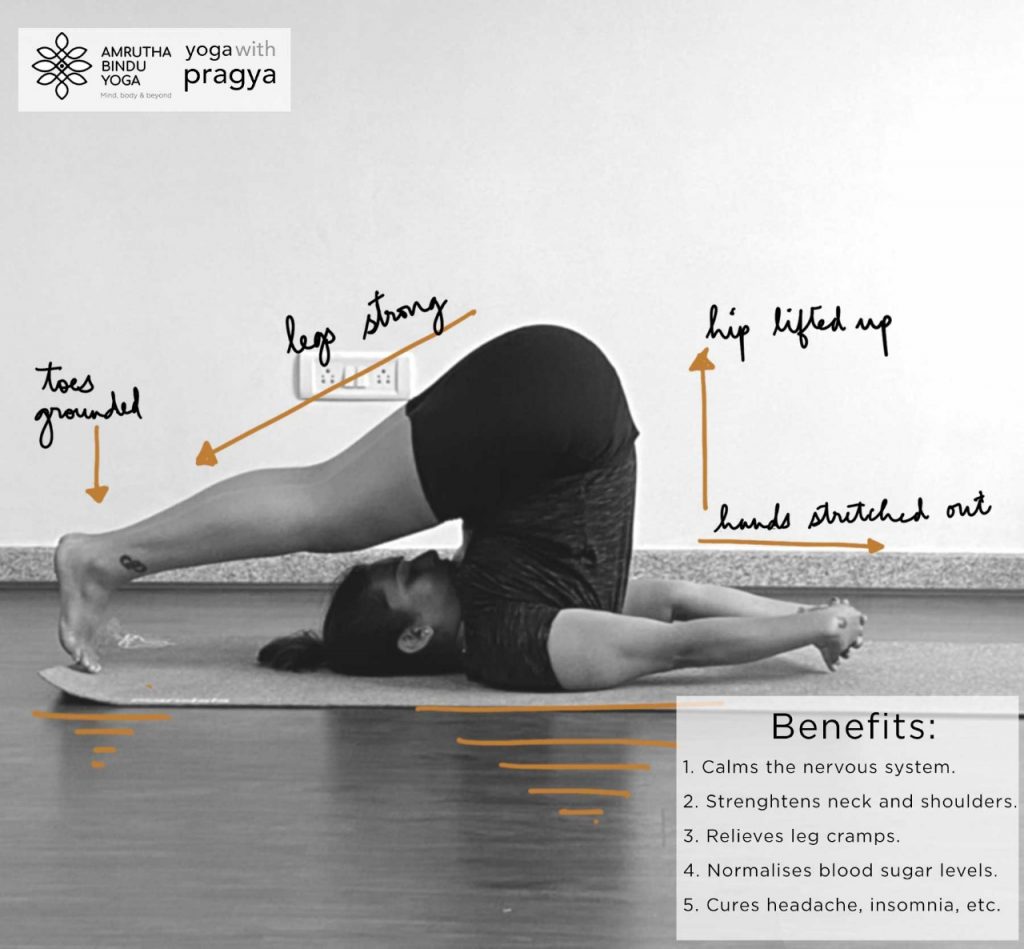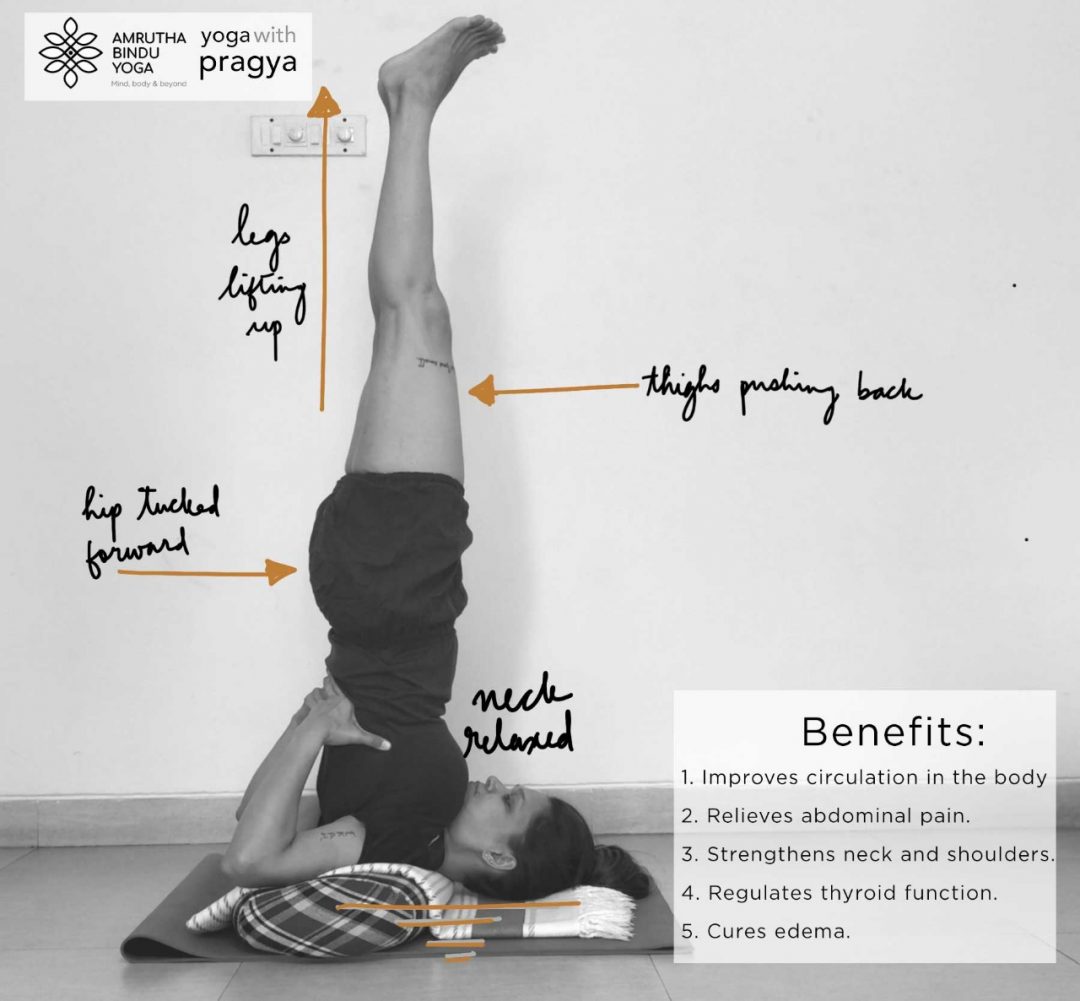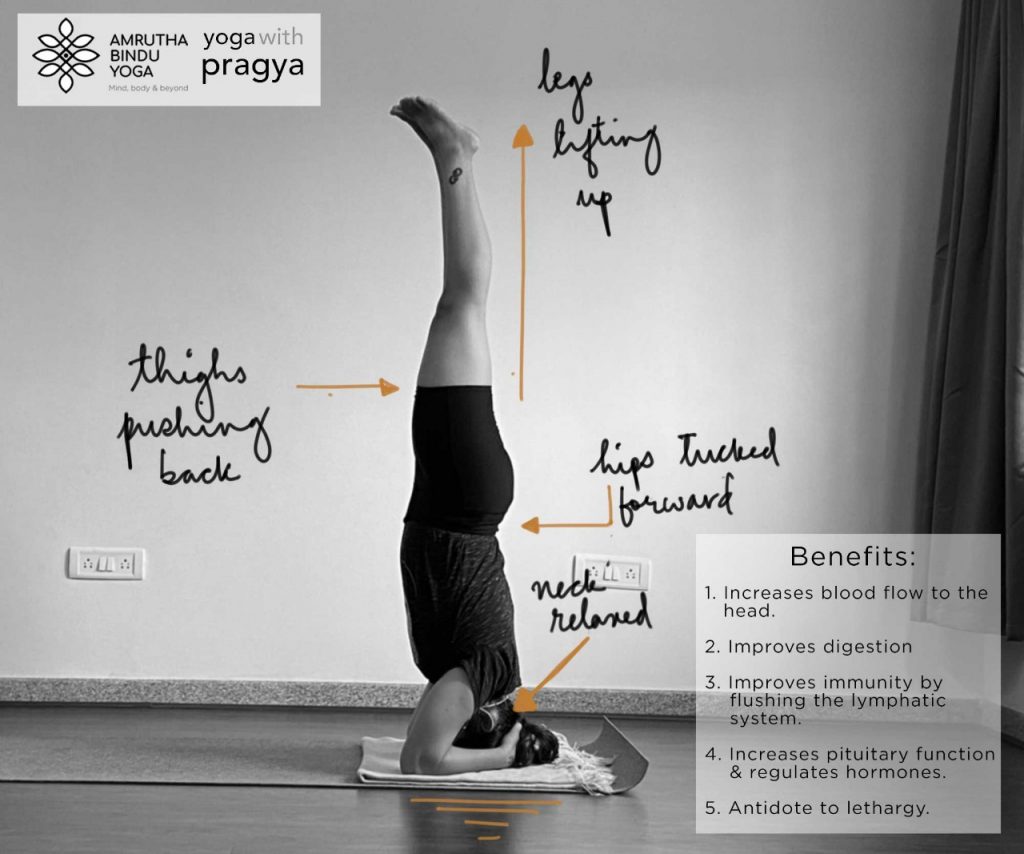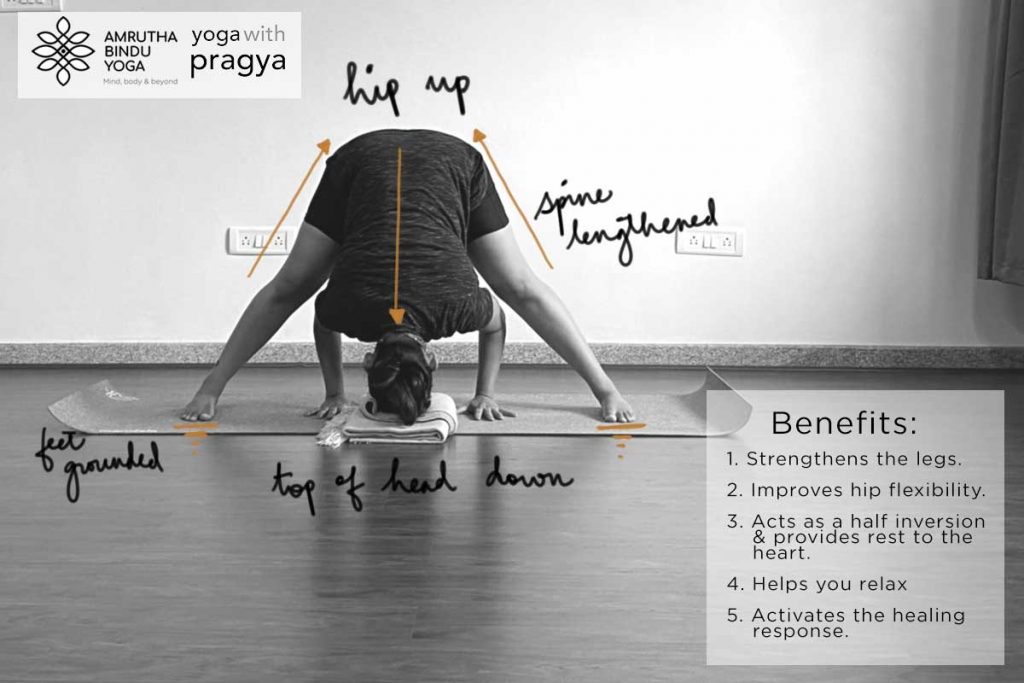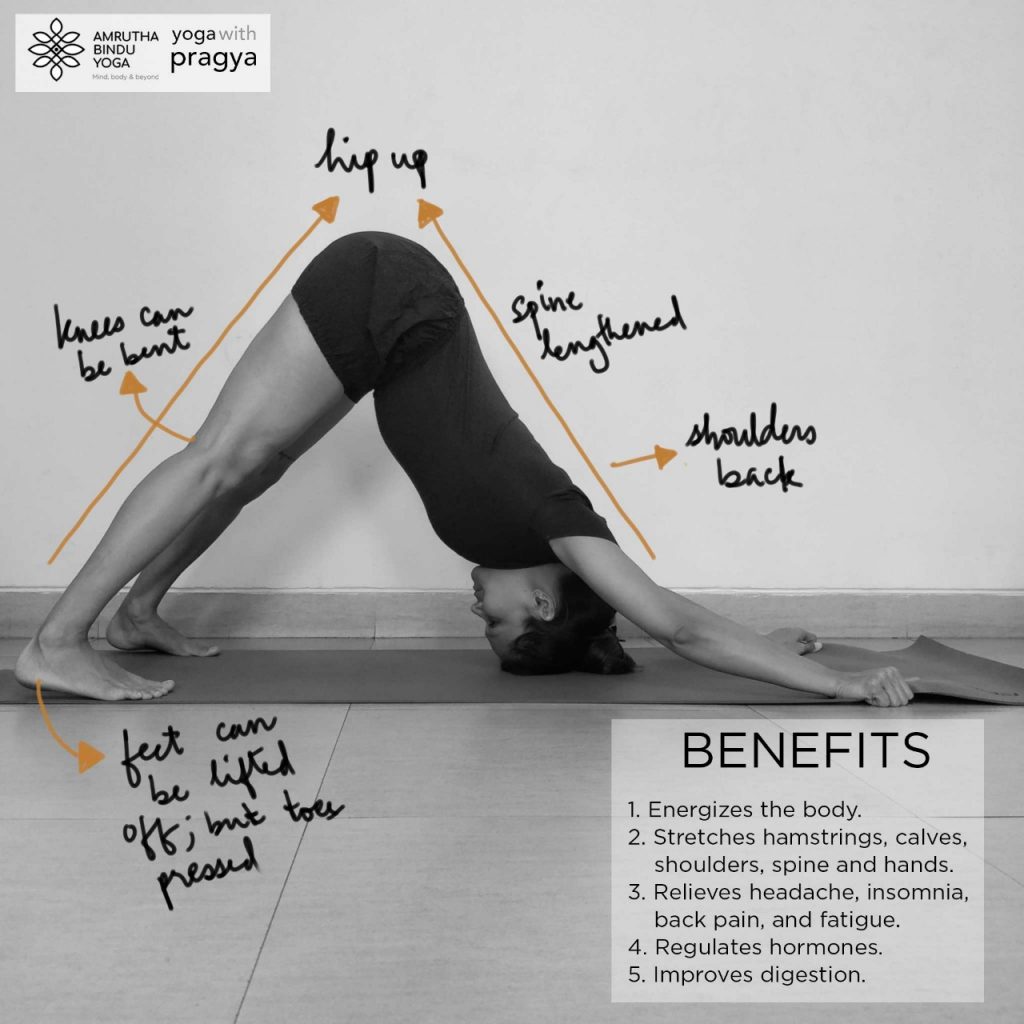
Looks deceptively simple, but isn’t.
There’s a general consensus among modern yogis that Viparita Karani or Legs-Up-The-Wall Pose may have the power to cure whatever ails you. (Yoga Journal)
In Sanskrit Viparita means ‘upside down’ and karani means ‘doing’. It is practiced widely as a restorative posture. When I started practicing yoga, I considered this an easy asana, specially the supported version. The full import of it is just starting to set in.
It helps to:
- Regulate blood pressure.
- Treat cardiac disorders.
- Treat stress-related headaches, including migraines.
- Gives relief from swollen feet.
- Relieve nausea.
Contraindications for Viparita Karani
This is an inversion and as such should be avoided if you have serious eye problems such as glaucoma.
Busting the Myths
Although this is actually a restorative and relaxing asana, the final pose is quite difficult for beginners and those with stiff backs. Read on for some practice pointers.
Practice Pointers for Viparita Karani
- You can do this asana with your legs on a chair, or even on your bed!
- It’s a little unwieldy to get the buttocks close to the wall to get the legs up, but there is a technique (see video).
Stay tuned for more from our Yoga to Boost Immunity Sequence.
Download the Daily Yoga Practice Checklist.
Follow Amrutha Bindu Yoga here.
Follow Medha Bhaskar here.
Follow me (Pragya Bhatt) here.

